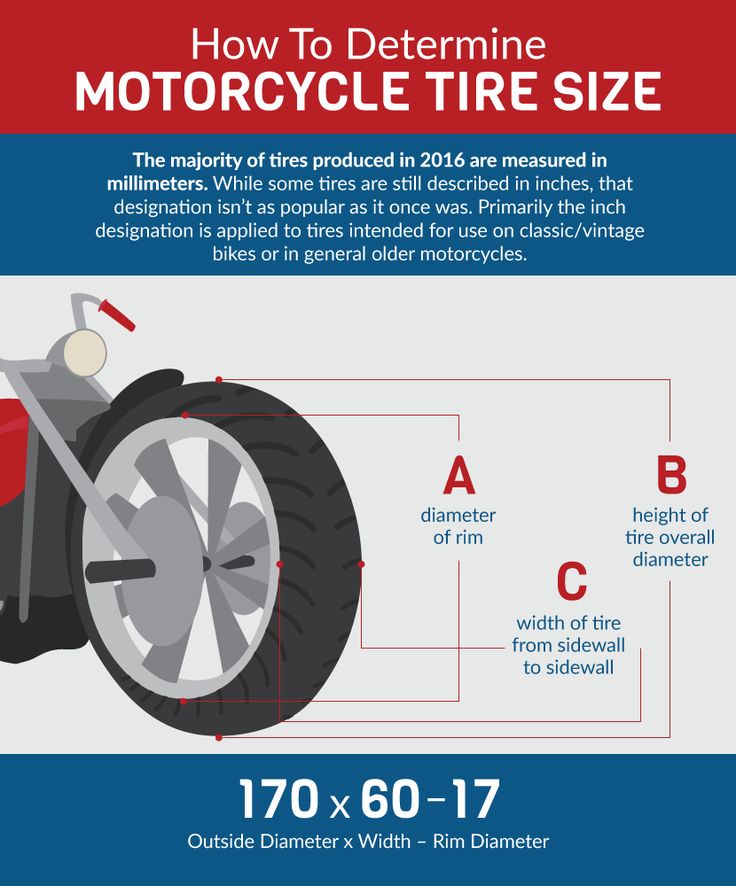In this guide, we’ll take a high-level look at what bicycle tires a made of and how everything comes together.
While it might seem like a simple rubber hoop, bringing a bike tire into the real world involves high-tech machinery, the latest manufacturing techniques, and labor-intensive craftsmanship.
Here, we’ll walk you through the process step-by-step.
What bicycle tires are made of largely depends on which purposes they’ll be used for.
As such, after modeling its design using 3D software, the manufacturer will create a rubber formula that displays different characteristics. These include:
It’s a balancing act, though. Why? Because improving one trait typically reduces another’s performance. To illustrate this, increasing rubber hardness boosts a tire’s longevity and reduces rolling resistance, but also decreases its wet weather adhesion, while also delivering a harsher ride.
Although the specific designs and rubber mixes used by manufacturers are closely guarded secrets, Bicycling.com explains the mix of ingredients is generally the same:
When it comes to what bicycle tires are made of, there are four main types of rubber used.
The tread and sidewalls are typically constructed from natural rubber, which is derived from the bark of the Hevea Brasiliensis tree. Synthetic rubber versions, such as butyl rubber and halogenated butyl rubber, are usually extracted from crude oil and used in the tire’s casing.
Carbon black helps to reinforce and strengthen modern bike tires, as well as improve their abrasion resistance, maximize traction, and provide their dark color.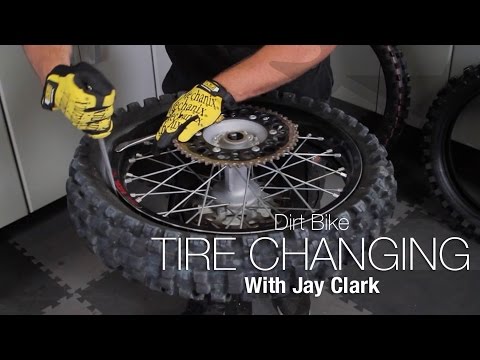 In years past, sulfur provided many of these same benefits.
In years past, sulfur provided many of these same benefits.
Silica (silicon dioxide), on the other hand, determines traits like flexibility and wet weather performance.
Bicycle tires aren’t made from just one type of carbon black or silica, though. Different versions are used depending on the section of the tire being constructed, along with the manufacturer’s specific performance requirements.
Sulfur also acts as a softener during the process, along with other industrially refined ingredients like:
As a tire is used, these waxes and the beneficial components they contain naturally migrate to its surface, thereby providing protection from exposure to ozone (antiozonants), oxidation (antioxidants), and heat.
To give you an idea of commonly used ingredient ratios, Schwalbe tells us their tires typically contain 40% to 60% rubber and 15% to 30% filler, with 20% to 35% remaining ingredients.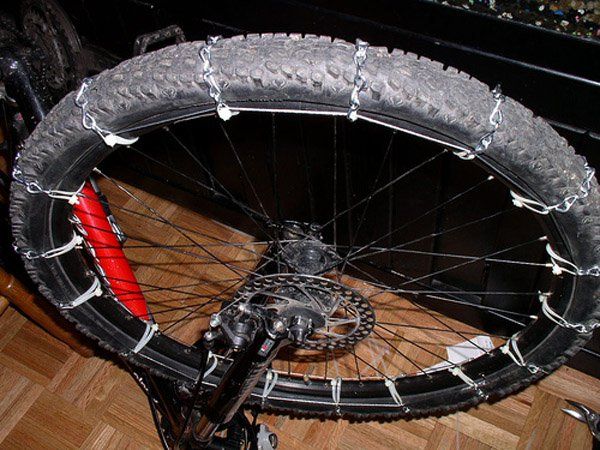
These ingredients meet inside industrial machinery known as an internal mixer. (The Maxxis website references a specific model, known as a Banbury mixer.)
Here, bales of rubber are kneaded inside a large chamber by two rotors, which move at variable rotations per minute. They’re simultaneously heated to temperatures as high as 338°F (170°C), while other ingredients are added as needed to achieve desired traits like elasticity, durability, surface adhesion, dampening, and so forth.
Depending on the size of the mixer, manufacturers can combine between 40 kg and 400+ kg of rubber and other ingredients per session, and in less than five minutes. They draw multiple samples during this relatively short process to ensure the desired properties are present.
Once mixing is complete, doughy rubber exits the machine through a discharge hatch at the bottom and is sheeted out like a pastry into a thick, continuous layer by powerful rollers.
At this point, Maxxis tells us it’s referred to as a ‘slap.’
During the first phase of the manufacturing process, an internal mixer is commonly used to blend natural and synthetic rubber bales with other ingredients. This creates compounds that exhibit specific characteristics, depending on the tire’s intended use. Credit: Alibaba.comSlap slated for sidewalls is covered with plastic sheeting and rolled further. Tread slap (the part that comes into direct contact with the ground) is cut into long, narrow strips.
These strips are then fed into an extruder and heated again. Once the rubber becomes doughy, a revolving screw applies shear force and sends it through a die, forming a profile that’s thicker in the center and thinner on the sides. Together, this helps improve resistance to wear.
Together, this helps improve resistance to wear.
To cool and set its shape, tread rubber is subsequently submerged in water. It’s also dipped in an anti-tack compound like metallic stearate or stearic acid, powdered mica, talc, or different water-based formulas, to prevent sticking. Then, it’s wound onto spools with a fabric separator between each layer to further prevent unwanted adhesion.
Sidewall slap is also wound around a spool, separated by fabric and then dried, stacked in cases called ‘books,’ and stored for later use. If needed, it’s immediately transferred to the next step in the process.
An example of butyl rubber being forced through a die, which it forms into a specific shape. When it comes to bike tire tread, this involves a curved design that’s thicker in the center and thinner on the sides. Credit: Goodyear RubberAs we explain in How Bike Tires Work, the carcass (otherwise known as the casing) is perhaps the most critical section of a bike tire, since it acts as the underlying framework and determines its shape. It also defines how the tire conforms to surface irregularities, along with its rolling resistance.
It also defines how the tire conforms to surface irregularities, along with its rolling resistance.
Due to its importance, we’ll split this part of the process into two different stages.
First, a third-party manufacturer twists nylon textile yarn together, treats it with chemicals that promote bonding with rubber, and forms it into a grid pattern.
Nylon mesh that features a grid-like pattern is calendered and molecularly bonded with tread rubber at a 45-degree angle. This provides a bike tire with strength and flexibility. © TreadBikelyUpon arriving at the tire manufacturer, this yarn is stored, and its temperature and humidity levels are carefully monitored since both of these factors can impact its tensile levels.
When the time comes, webbing is passed through very hot rollers at a 45-degree angle. This permanently bonds it with the tire’s casing rubber through a process known as calendering. This is what’s ultimately responsible for defining the tire’s shape and providing it with a great deal of support.
The density of this webbing yarn is measured in threads per inch (TPI), which references the number of threads contained in one square inch of the casing. Why does it matter?
Casing mesh with fewer TPI (< 80) typically features larger gauge threads and more rubber, resulting in tires that are heavier and more rigid. Higher TPI casing mesh (> 100), on the other hand, features finer threads and less rubber, resulting in greater strength, lighter weight, better flexibility, and improved suppleness. It also results in a higher price.
In addition to rubber compound and mixing process, Continental further explains that the yarn’s makeup can have an impact on a tire’s performance: “Very fine [casing] material makes the tire smoother and protects the carcass from punctures,” while “coarse fabric is more cut-resistant and makes the tire more robust,” they say.
Bottom line: Much like rubber formulation, “the choice of fabric,” they point out, “depends on the purpose of the tire. ”
”
After calendering, casing rubber enters a cutting station where blades slice it into premeasured strips. In most instances, it will take multiple pieces to construct a single tire.
Similar to the tread section, after being assembled by hand, these casing strips are wound onto spools with fabric backing that prevent sticking. They can be used immediately or stored for later assembly.
If used immediately, raw tread rubber is added to the carcass by wrapping a layer around the drum and firmly sticking it down. Continental points out that tread thickness is also a significant contributor to a tire’s ride quality characteristics.
While everything above is happening, a specialized wrapping machine takes steel or aramid (Kevlar) fibers, twists them together, and forms them into rings. These rings, formally known as the tire’s beads, are then covered with a thin layer of protective rubber.
These rings, formally known as the tire’s beads, are then covered with a thin layer of protective rubber.
With the casing already wound around a metal spool, Schwalbe tells us that a specially trained employee inserts beads on each side by hand. Once inflated, the strength they provide will help hold the tire onto the rim after it’s inflated with air.
Related: How to Buy a Bike Pump
Next, a mechanical apparatus simultaneously folds the casing’s rubber over both beads. If additional puncture protection is needed, a Kevlar strip is forced into the rubber as well.
Here, we can see the casing rubber installed on the tire building drum, with each bead’s wire in place. Next, arms on the sides will fold the rubber over each bead to form a single unit. Tip: Look closely, and you’ll see the casing’s nylon mesh calendered at a 45-degree angle into the rubber. Credit: Kenda TireThe extruded rubber for the tire’s sidewalls is now glued into place, and the tread is applied to the center. With all of the layers set, the bike tire is removed from the building machine. At this point, it’s known as a ‘green’ tire.
With all of the layers set, the bike tire is removed from the building machine. At this point, it’s known as a ‘green’ tire.
From here, a specialist loads the tire into a branding station, where hot metal plates quickly bond labels to its sidewalls.
It’s then placed inside a clamshell-like mold over a tubular bladder. The shell is sealed, steam is pumped into the bladder like a balloon, and the interior heats up to 180°C for between three and six minutes. Overall, this accomplishes two goals:
 This can improve traction, but also increase rolling resistance. Credit: Alibaba
This can improve traction, but also increase rolling resistance. Credit: AlibabaSimilar to many other components involved during the manufacturing process, such as rubber formulation and threads-per-inch, time spent ‘cooking’ depends on a tire’s desired traits. For example, the general rule of thumb is that the longer it spends vulcanizing, the harder—and less elastic—a tire will be.
An example of a manufacturer’s clamshell-like chamber, which houses the tread mold referenced above. After placing the green tire inside and heating it to high temperatures, a chemical process called vulcanization improves the rubber’s elasticity, strength, viscosity, and wear and weather resistance. Credit: Global Mountain Bike NetworkFinally, the tire is removed from the mold to cool. Eventually, it’s sent to a warehouse for distribution.
After cooling, each tire is inspected for flaws (e.g., bubbles, voids, etc.), whether by a specially trained employee or by bombarding it with x-rays and visualizing the results on a screen.
In most instances, one tire from each batch also undergoes in-depth quality control testing. This might involve one or more of the following:
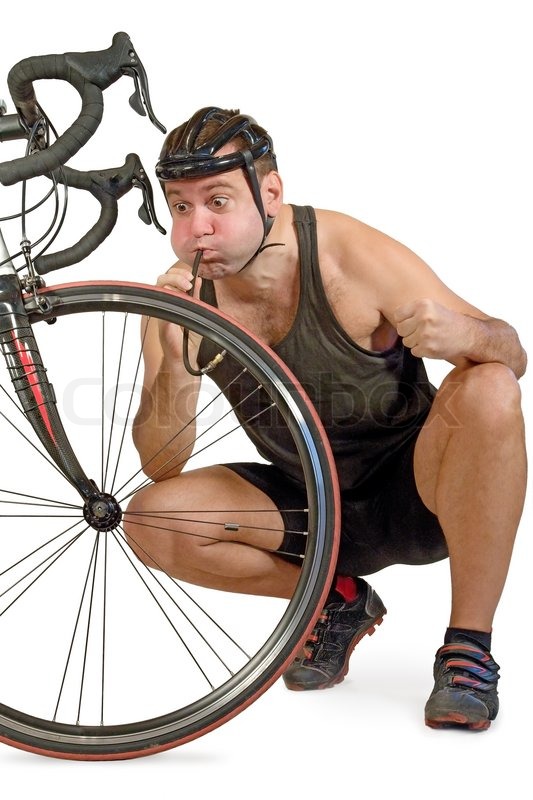 Credit: Triwood1973
Credit: Triwood1973It’s easy to overlook the substantial technology and manufacturing prowess involved in the development and production of every tire that graces your bicycle.
The next time you go for a spin, though, take a brief moment to marvel the many decades of progress associated with its rubber compound, additional ingredients, mixing process, mesh formation and calendering, and quality testing—all of which combine to make sure you have the smoothest, most enjoyable ride possible.
Keep rolling: Common Bike Tire-Related Words & Phrases
guidesmanufacturingreferenceRubber compoundtire guidestires
Bicycle tires are tough and are designed to be just that. But it is often overlooked how much work and technology have been put into their production for them to be this good. Just how are bike tires made?
Bicycle tires are made by processing rubber and producing components with varying qualities..jpg) These parts are then assembled. Let’s take a detailed look at the process of how they are manufactured in a production facility.
These parts are then assembled. Let’s take a detailed look at the process of how they are manufactured in a production facility.
Table of Contents
There are many bicycle tire types, and all possess qualities that make them well-suited for specific biking conditions.
Mountain bike wheels need to be durable for off-road tracks, and road bike wheels are designed for better aerodynamics that allows for faster speeds. However, bicycles in the past did not have such specifications.
While rubber bicycle tires are now the norm, early bicycle wheels were made of wood and metal with the tires made of iron. We can only imagine how uncomfortable riding a bicycle with such wheels would be.
Thankfully, numerous technological innovations in manufacturing led to the use of rubber that helps make cycling more comfortable.
But the sort of technology that goes into producing modern bicycle parts is not easy to imagine — at least it wasn’t for me. Seeing a detailed explanation of the manufacturing process lent a higher appreciation of bike tires that many people take for granted.
Below is a step-by-step look at how modern bicycle tires are made.
How Bicycle Tires Are Made1. Mixing processEverything begins with gathering materials; this often dictates where production facilities are located.
Many leading tire brands are not made in USA because it is more practical to have the factories in places where the rubber may be sourced locally.
The first step is to mix the base rubber ingredients, these are natural rubber and synthetic rubber. Certain additives are also used, but these materials vary depending on the recipe.
A different recipe may be used depending on the product type being produced, and bike tire manufacturers all have unique recipes for every type.
The combined rubber is mixed together with additives and oils and then transferred to a specialized mixer. This machine can thoroughly combine the tire components, resulting in very high temperatures due to the resulting friction.
2. Processed rubber is rolled outThe rubber mixture is brought to a homogenization process, wherein it is ironed out. This ensures that the rubber is free from air pockets, and ends up in a mat-like state.
It then goes through a curing process, where the rubber mat is treated for consistency and stored for cooling for around eight hours.
At this point, samples of the production batch may be subjected to quality testing to determine if the resulting material is up to commercial standards. Not all tire manufacturers do this, but it is an important procedure for leading brands.
Tests include ozone tests, tensile strength tests, and other quality checks to ensure that the desired characteristics for specific tire types are retained by the produced material.
3. ExtrusionThis process is a manufacturing step where specific materials are passed through a machine to create specific products with different recipes, and tires made of rubber use it extensively.
The rubber is then passed through a heated metal die. The die makes the center of the tire thicker.
After extrusion, it is then flattened into a long sheet using rollers.
The resulting rubber is collected into spools.
4. Section constructionBicycle tires are made using several layers of rubber. However, each layer is different from the rest with different strengths and qualities.
Key layers are the nylon casing, the treads, and the sidewall that also has the branding. Another important component is the bead; it is similar to a metal wire in appearance but may also be made of a strong material such as Kevlar.
The nylon casing is not made of rubber and is prepared separately; it is made up of a weblike mesh.
This nylon casing is matched to a layer of rubber casing and merged together. The combination serves as the base of the tire and is also known as the carcass.
The tread usually goes through a longer and more rigorous procedure to ensure that it has the necessary durability for road performance.
5. Tire assemblyOnce all sections of the tire have been prepared, it’s time for assembly. This process is usually done by hand but also makes use of a specialized wheel-like machine, layering the components in order. Glue may be used to keep the components together.
First goes the carcass. Then, the bead is placed on each side, which serves to reinforce the structural integrity of the tire; this is also what dictates the width of the sheet.
The excess length of casing on each side is folded over the beads and covered with sidewall reinforcement then sealed in place with chafers.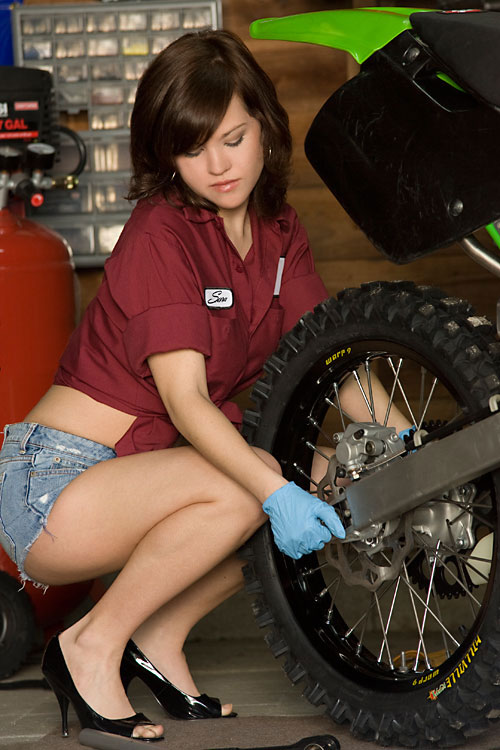
The tread is placed at the center section of the carcass. This is when the brand logo is added as well.
After assembly, the tire is still flat and does not fully resemble the shape we all know.
6. Pressure cookingA specialized curing machine is used for the final step of production. The tire is placed into it and then goes through pressurization.
This involves subjecting the rubber to intense heat, resulting in the layers thoroughly bonding, which results in its material strength.
It is also this process that gives the tire its recognizable shape. The finished product will also be subjected to different types of testing to ensure that safety standards are met.
ConclusionBicycle tires are an impressive product of continuous technological innovation, and every biker will be able to appreciate this more as they ride more.
Experienced cyclists may be able to understand tires at a different level, considering how different modern ones are from those made one or two decades ago.
You should have gained a higher appreciation for them after learning about how are bike tires made. If you have any comments or suggestions about this topic, please feel free to leave your message in the section below.
Always ride safely.
Furthermore, there are some tips & tricks about tire maintenance, you can refer guide on inflating, measuring a bike tire, and the best time to replace bike tires.
Gary Johnson
“I ride my bike to work for years, but is that enough? Our carelessness towards our surroundings has taken a toll on the environment. And now, everyone is responsible for changes; even the most minor contribution is counted. With this hope and spirit, I started with my partner to establish Biketoworkday to help more individuals commute to their work sites on their bikes.”
Rubber and compound are the most popular materials today.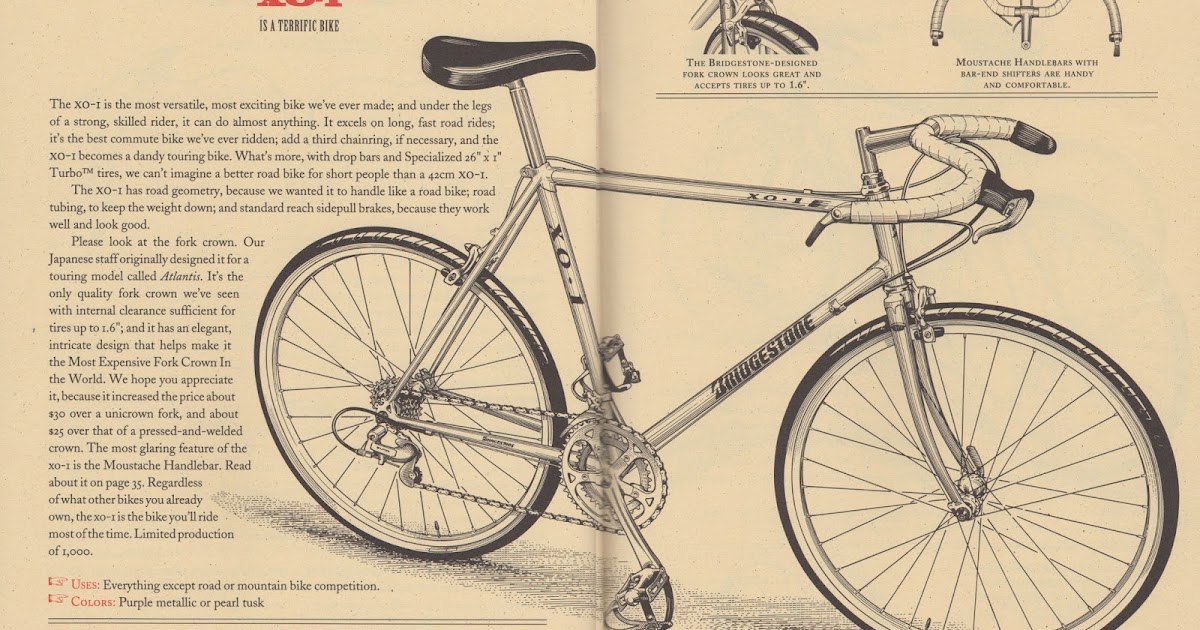 Rubber is extracted by thickening the sap of rubber trees. Such a process requires a large investment, therefore, synthetic rubber is more often used, which, in general, has little difference from natural rubber. In addition, oil and petrol resistant rubber can only be obtained from synthetic rubber. Rubber is made by adding a filler (usually carbon black) to rubber and then vulcanizing it. A large amount of filler significantly worsens the properties of rubber - it is subject to rapid wear. And the cost of such rubber is reduced very significantly.
Rubber is extracted by thickening the sap of rubber trees. Such a process requires a large investment, therefore, synthetic rubber is more often used, which, in general, has little difference from natural rubber. In addition, oil and petrol resistant rubber can only be obtained from synthetic rubber. Rubber is made by adding a filler (usually carbon black) to rubber and then vulcanizing it. A large amount of filler significantly worsens the properties of rubber - it is subject to rapid wear. And the cost of such rubber is reduced very significantly.
First, run a dry finger across the rubber while pressing it hard. If a clear mark remains, then this rubber will serve you little and of poor quality.
Children's bikes are available with delivery to your region! Big choice. Best price guarantee.
Secondly, pay attention to the quality of the "whiskers" that are on each protector. To do this, try to pull them. A good and high-quality one will not want to come off, stretching three to four times its length. Like Nokian M&G, for example. On non-wearable rubber, they usually come off easily without stretching even twice as much. By the way: try to tear off at least 2-3 tendrils from different sides of the tire, as the quality of rubber can be uneven.
Like Nokian M&G, for example. On non-wearable rubber, they usually come off easily without stretching even twice as much. By the way: try to tear off at least 2-3 tendrils from different sides of the tire, as the quality of rubber can be uneven.
Thirdly, look at the quality of the tire as a whole: are there any extraneous surpluses or influxes of rubber, caverns, pay your attention to the quality of the sealing of the bead cord, the curvature of the tire. Personally, I never take crooked tires in the store, but I choose goods with bent bead cords, without “accordion” on the walls. And it turns out strange when the sellers begin to convince me that this is the norm, and that all defects will be straightened out as soon as I pump up the tire. I couldn't straighten them.
Bicycles are on sale every day at the Velosklad. Best price guarantee! Delivery to regions.
Compounds are compositions of polymers and monomers. They are less expensive to manufacture than rubber, but they are far superior to synthetic rubber, showing excellent rolling resistance. It is not clear why they practically disappeared from store shelves in 2000.
It is not clear why they practically disappeared from store shelves in 2000.
The only way to check is to check the "antennae" of the tread. When trying to tear them off, they should stretch at least twice. But, alas, often there are no antennae on compound tires. You will have to rely on a visual check for poor-quality sealing of the bead cord or curvature of the walls. Whatever the case, a compound tire is better than a rubber tire at the same price.
How to tell the difference between a compound tire and a rubber tire. As can be understood from the names, the main difference is in the material of manufacture. If you run a dry finger over the rubber while pressing it hard, you will feel it stretch. By running the same way over a compound tire, you will not feel how the material stretches.
Winter, late autumn and early spring are the times when there is ice and snow on the streets. There is only one way to deal with ice - either put good studded tires (like Nokian WXC 300, for example), or studded them yourself. For snow, there are more solutions. It all depends on his condition. For loose and little-trodden snow, a tread with rare and high elements, like the Panaracer Fire Mud, is suitable. A tread equipped with small frequent elements, for example, the Panaracer Fire XC, will cope with rocked and trampled snow. Snow with frost can be equated to ice. In general, in any case, for winter it is better to buy wider tires at least for the rear wheel. For winter trips, slicks or semi-slicks are unacceptable. You can take them, but then be prepared to amuse those around you with your “feints”, and also crash into someone or something.
There is only one way to deal with ice - either put good studded tires (like Nokian WXC 300, for example), or studded them yourself. For snow, there are more solutions. It all depends on his condition. For loose and little-trodden snow, a tread with rare and high elements, like the Panaracer Fire Mud, is suitable. A tread equipped with small frequent elements, for example, the Panaracer Fire XC, will cope with rocked and trampled snow. Snow with frost can be equated to ice. In general, in any case, for winter it is better to buy wider tires at least for the rear wheel. For winter trips, slicks or semi-slicks are unacceptable. You can take them, but then be prepared to amuse those around you with your “feints”, and also crash into someone or something.
Autumn and spring are the best time for for those who love skiing in difficult conditions - in the mud. I prefer the usual summer aggressive or all-purpose tires on the front wheel, and on the back I usually put something with rare lugs, like Nokian X-Trak or Michelin XL-S.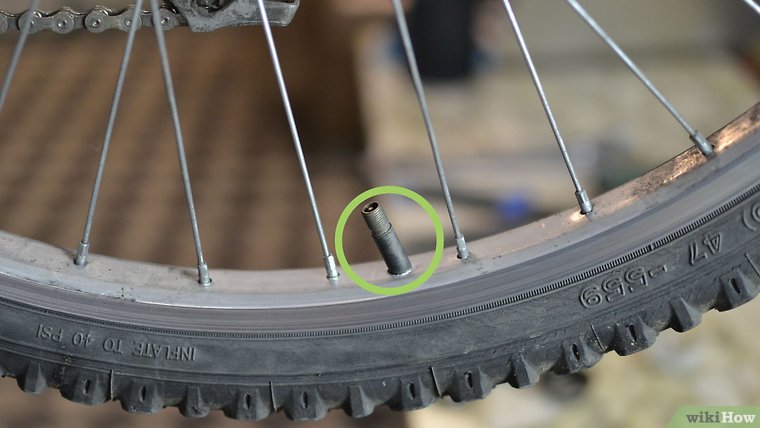
4x track in Volen. Without rubber with "teeth" it is better not to try!
Basically, in the summer all cycling takes place either on the asphalt track or on dirt roads. It will make sense to put slicks or semi-slicks here. Of course, it is better to choose a tire based on the route. Riding through sands and swamps requires something aggressive, wide, with an infrequent tread. On a paved road, extra effort won't hurt, but on heavy sections it will give more benefit. My choice of tires depends on what is the most difficult section I have on the road. Although you can, for example, choose tires for the longest section of the route. Any of these decisions will be correct.
Budget semi-slick. It used to be an evil tire for DH.
Various pribludy in the structure of tires. The most famous "chip" is a Kevlar tape, which is embedded under the tire tread. It is great protection from objects that can cut the tire.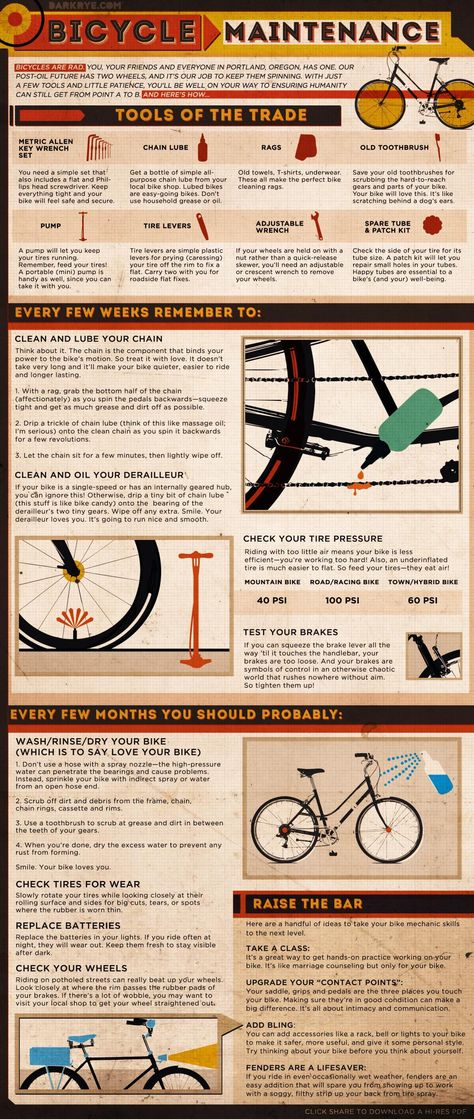 But it will absolutely not protect against piercing objects - nails, paper clips and other things. Another notable feature is the Kevlar bead cord. The main advantage of such a tire is that it is compactly folded into a roll, and you can take it with you. In addition, it is much lighter than a tire with a steel bead cord. I heard a strange opinion that Kevlar is unsuitable for winter, as it "rots". This is absolutely false. Kevlar is an inert material.
But it will absolutely not protect against piercing objects - nails, paper clips and other things. Another notable feature is the Kevlar bead cord. The main advantage of such a tire is that it is compactly folded into a roll, and you can take it with you. In addition, it is much lighter than a tire with a steel bead cord. I heard a strange opinion that Kevlar is unsuitable for winter, as it "rots". This is absolutely false. Kevlar is an inert material.
Text: kaer.
Source: forum.xservice.ru
Bicycle Tire Construction
Bicycle Tire Shell (Casing)
SINGLE PLY CASING (SPC)
One layer of nylon fiber coated with rubber that wraps around the cord. Single-layer weaving allows the tire to "lick" tracks with different terrain and reduces the weight of the tire.
DUAL PLY CASING (DPC)
Double layer nylon weave for added protection on downhill runs.
Weave
THREADS PER INCH (TPI)
The number of threads of nylon that make up the carcass of the tire per square inch.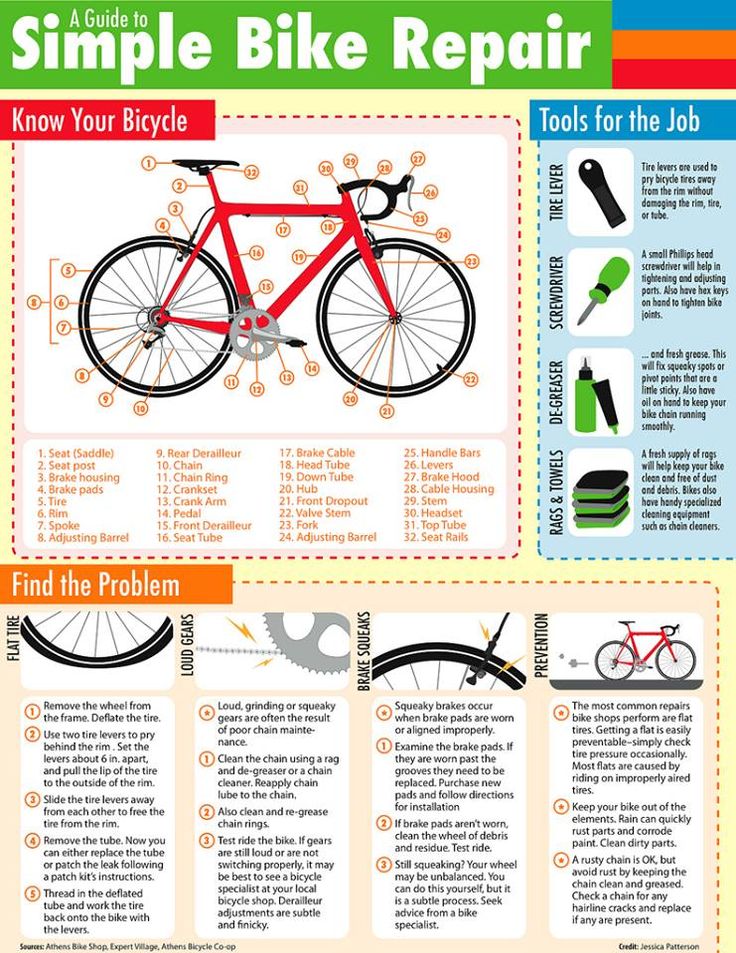 A lower TPI value (correspondingly greater thread thickness) increases the possibility of a puncture and increases the weight of the tire. A higher TPI allows the tire to better "lick" the bumps in the track and provides a more comfortable ride. In addition, high TPI tires are lighter.
A lower TPI value (correspondingly greater thread thickness) increases the possibility of a puncture and increases the weight of the tire. A higher TPI allows the tire to better "lick" the bumps in the track and provides a more comfortable ride. In addition, high TPI tires are lighter.
Bead
WIRE BEAD
Strong material that holds the tire to the rim. Steel wire makes the tire heavier, but does not stretch with increasing air pressure in the tire.
FOLDABLE BEAD
Flexible like steel, the bead is also designed to hold the tire on the rim, but is lighter and makes the tire more transportable on the road. The flexible cord is either Kevlar or aramid fibers.
CARBON FIBER BEAD
A flexible material with the ability to hold the tire on the rim at the high pressures found in road tires.
Maxxis tyres. Construction
TUBULAR
A traditional construction tire, better known as the "single tube".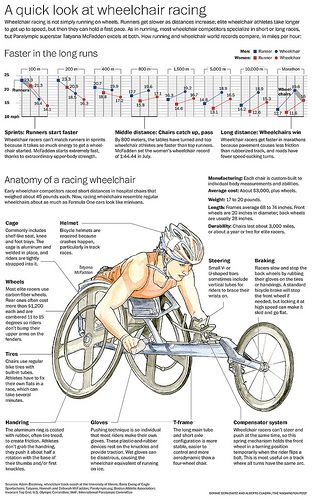 In this case, compressed air is inside the tire. A bicycle tire of this type is glued into a special tubular type rim.
In this case, compressed air is inside the tire. A bicycle tire of this type is glued into a special tubular type rim.
RADIAL
The radial design of the tire consists in the orientation of the fibers perpendicular to the rolling direction of the tire. This production method results in a soft, flexible sidewall for a soft, comfortable ride.
TUBELESS ROAD
Tubeless technology that combines ultra-strong carbon fiber with a butyl inner layer. The combination of these two technologies results in a road bike tire that does not require the use of a tube.
BUTYL INSERT
Additional layer of butyl rubber placed from cord to cord. Used in Downhill tires to prevent snakebite and protect the rim from hard impacts.
LUST
Acronym for Lightweight Ultimate Sidewall Technology. The nylon base of the tire is coated with an ultra-light material that forms an airtight layer, allowing for a lightweight tubeless tire. This technology has found application in MTB racing tires, e. g. Larsen TT UST, Monorail.
g. Larsen TT UST, Monorail.
EXO PROTECTION
Extremely durable material housed in the sidewalls of the tire to prevent tire side cuts when used on rocky and mountainous trails. The finely woven material is very light and flexible, so its use does not impair the properties of the tire. The technology is implemented in tires CrossMark, Ignitor, Ikon
ONE70
ONE70 technology uses a special weave in the tire carcass to reduce rolling resistance. The ONE70 provides excellent trail feel and significantly reduces tire weight. The technology has found application in tires MaxxLite 285 and MaxxLite 310
Maxxis tires. Puncture protection
SILKWORM
SILKWORM technology uses a unique material developed by Maxxis to provide exceptional tire protection against punctures and cuts. Silkworm material can be placed from cord to cord. This tire is labeled Silkworm® B2B. If the anti-puncture material is placed only under the tread, the Silkworm® marking is applied to the tire. You can find this marking on tires Re-Fuse, Detonator, Hookworm
You can find this marking on tires Re-Fuse, Detonator, Hookworm
KEVLAR® COMPOSITE (K2)
Exclusive Maxxis technology used in a limited number of bicycle tires. The technology consists in the use of a special fabric that provides more reliable protection against punctures than the common Kevlar® and Vectran®. The use of lightweight and flexible K2 material guarantees unrivaled performance characteristics. K2 is used in Maxxis road tires. Courchevel, Re-Fuse
NYLON BREAKER
Nylon puncture protection layer placed directly under the tire tread. Used in some road tires because Xenith Hors Category, Courchevel
MAXXPROTECT
Polyfiber material placed directly between the tread and the nylon base of the tyre. Available in various thicknesses from 0.9 to 1.5 mm, MAXXPROTECT polyfiber material is used for puncture protection in some hybrid semi-slicks. Overdrive MaxxPro
KEVLAR® INSIDE
Kevlar layer is placed between the base of the tire and the tread. Similar to MAXXPROTECT, KEVLAR® INSIDE technology uses a variable thickness Kevlar layer to provide optimal puncture protection. Overdrive Kevlar Belt
Similar to MAXXPROTECT, KEVLAR® INSIDE technology uses a variable thickness Kevlar layer to provide optimal puncture protection. Overdrive Kevlar Belt
Maxxis tyres. Compound. Technologies
The most important component is the rubber compound (or compound) used to make the tire. Using two different compound formulas, Maxxis engineers get two tires that are completely different in performance and completely identical visually. The list below will help you understand the different compounds used in Maxxis
SINGLE
Tires Using a single compound throughout the base of the tire, optimized for maximum survivability and performance.
DUAL
Double compound. Harder rubber is used in the middle for better rolling. And a softer compound is used for the side studs for optimal bike control.
TRIPLE (3C)
Similar to DUAL, TRIPLE COMPOUND technology uses rubber with different characteristics to achieve the desired tire properties. Used in road and specialty downhill tires
Used in road and specialty downhill tires
3C ROAD
The tire is a combination of three different compounds: the most rigid in the center for maximum rolling and two softer ones for confident control of the bike in the turn. Used in Courchevel 9 road tire0005
3C MTB
Triple compound also used in SPC tires for MTB bikes. Similar to road MTB 3C tires, they feature a stiffer center and softer side studs for optimal bike control in all trail conditions. Ikon
3C DownHill
3C DownHill
tyre. Used in Downhill tires Minion DH Front, Minion DH Rear, High Roller
EXCEPTION SERIES
A technology that combines high TPI and a special compound for low weight and exceptional rolling. The eXCeption series is available on a limited range of models. The technology is used in tires DTH, Miracle, Larsen TT, CrossMark, Ignitor, High Roller, Aspen, Ikon
SUPER TACKY
Special compound, the main properties of which are low rebound and excellent grip.